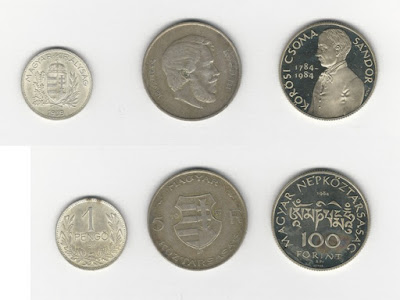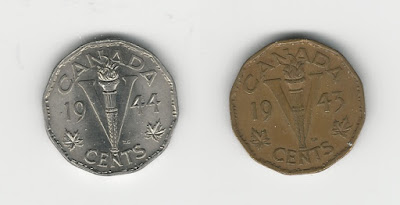1848 Revolution
“When France sneezes, Europe catches cold.” Liberal, nationalist revolts broke out across Europe, the political expression of Romanticism that was typified by the music of Chopin and Liszt, and paintings of Eugene Delecroix, iconically, Liberty Leading the People(1830).
Left (six kreutzer; billon silver; .220 fine Craig 67)
Top
VALTO PENZ (“draft money”) 6 Coat of Arms K MAGYAR KIRALYI (of the Hungarian king).
Bottom
HAT KRAJCZÁR 1848
Right (20 Kreutzer silver Craig 69)
Obv: V FERD MAGY H T ORSZ KIRÁLYA ERD N FEJED (Ferdinand V, Hungarian, Croatian (Hrvetska) and Slavic (Toth) Countries King [and of] Transylvania (Erdély) Grand Prince.
Rev:MAGY.OR.VÉDŐJE 1848 SZ.MÁRIA IST. ANNYA (Hungary’s national protector 1848 Saint Mary God’s Mother) (These two legends and translations from Numista.com)
Ferdinand V actually abdicated in 1848, giving the crown to Franz Josef. As with other revolts, for example Texas against Mexico, the first claim was for a prior constitutional legitimacy.
The Twentieth Century: Fascism... Communism...
Left MAGYAR KIRALYSAG (Hungarian Kingdom. Actually a fascist "regency" holding place for a missing king). 1 Pengö The word "pengö" while loosely derived perhaps from "pfennig" is an onomatopoeia for "bingle" meaning that it rang like silver versus collapsing like paper. This coin was 0.640 fine, 0.1029 troy oz actual silver weight.
Not that the Reds do not appreciate expediency. Center: Kossuth Lajos obverse; national coat of arms reverse. 5 Forint 1947 .1929 troy oz net silver as 12 grams 0.500 fine. (The coins of 1946 were 20 grams 0.835 fine Latin Monetary Standard but communism is expensive.) "MAGYAR KÖZTÁRSASÁG" (Hungarian Republic. But you need to understand the root word KÖZ as in "community" and "collective" and from there to "village" and thence "public" things.
Left MAGYAR KIRALYSAG (Hungarian Kingdom. Actually a fascist "regency" holding place for a missing king). 1 Pengö The word "pengö" while loosely derived perhaps from "pfennig" is an onomatopoeia for "bingle" meaning that it rang like silver versus collapsing like paper. This coin was 0.640 fine, 0.1029 troy oz actual silver weight.
Not that the Reds do not appreciate expediency. Center: Kossuth Lajos obverse; national coat of arms reverse. 5 Forint 1947 .1929 troy oz net silver as 12 grams 0.500 fine. (The coins of 1946 were 20 grams 0.835 fine Latin Monetary Standard but communism is expensive.) "MAGYAR KÖZTÁRSASÁG" (Hungarian Republic. But you need to understand the root word KÖZ as in "community" and "collective" and from there to "village" and thence "public" things.
Far right. Commorative for Sándor Csoma de Kőrös who taught himself philology and then walked to Tibet in search of the ancestral home of the Hungarians. It was not there... but he did write the first western dictionary and grammar of the Tibetan language while in the employ of the British consulate. Reverse legend is MAGYAR NEPKÖZTÁRSASÁG (Hungarian People's Republic.)
When first issued in 1914, it was worth 50 korona, about $10 US.
They lost the war, but could have won the peace.
It was just that fascism got in the way.
10 Pengö 1936
10 Forint 1969. Face: Sándor Petőfi, national poet, revolutionary from 1848. Ironic on many levels as he likely died in Russia, captured after the Battle of Segesvar, when the Russians came to the aid of the Austrian monarchy.
PREVIOUSLY ON NECESSARY FACTS




















